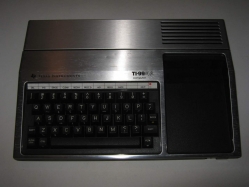
Autopsy:
from Wikipedia:
The Texas Instruments TI-99/4A was an early home computer, released in June 1981, originally at a price of USD $525.
It was an enhanced version of the less-successful—and quite rare—TI-99/4 model, which was released in late 1979 at a price of $1,150. The TI-99/4A added an additional graphics mode, “lowercase” characters comprised of small capitals, and a full travel keyboard. Its predecessor, the TI-99/4, featured a calculator-style chiclet keyboard and lacked any provision for lowercase text.
The TI-99/4A’s CPU, motherboard, and cartridge (“Solid State Software”) slot were built into a single console, along with the keyboard. The power supply board (linear in early systems, switching in later systems) was housed below and in front of the cartridge slot under the sloped area to the right of the keyboard.
source: wikipedia 99er.net
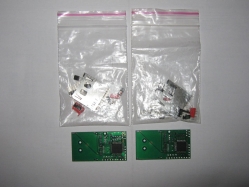
Autopsy:
SD2IEC is a hardware mass storage device using an SD/MMC card and interfacing with the IEC bus. It is based on the ATmega644 microcontroller from the Atmel AVR microcontroller family. The most prominent use of SD2IEC is emulation/replacement of a Commodore-1541 disk drive for a C64.
Hardware and the microcontroller’s firmware is available as open source (GPL).
source: sd2iec.de gitweb forum thread c64-wiki
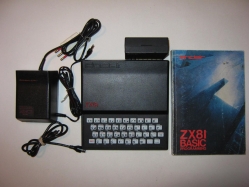
Autopsy:
from Wikipedia:
The Sinclair ZX81 was a home computer released in 1981 by Sinclair Research. It was the follow-up to the Sinclair ZX80. The machine’s distinctive appearance was the work of industrial designer Rick Dickinson.
Video output, as in the ZX80, was to a television set, and saving and loading programs was via an ordinary home audio tape recorder to audio cassette. Like its predecessor it used a membrane keyboard. Timex Corporation manufactured kits as well as assembled machines for Sinclair Research.
In the United States a version with double the RAM and an NTSC television standard was marketed as the Timex Sinclair 1000.
source: wikipedia
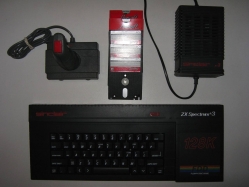
Autopsy:
from Wikipedia:
The ZX Spectrum +3 looked similar to the +2 but featured a built-in 3-inch floppy disk drive (like the Amstrad CPC 6128) instead of the tape drive, and was in a black case. It was launched in 1987, initially retailed for £249 and then later £199 and was the only Spectrum capable of running the CP/M operating system without additional hardware.
The +3 saw the addition of two more 16 KB ROMs. One was home to the second part of the reorganised 128 ROM and the other hosted the +3′s disk operating system. This was a modified version of Amstrad’s AMSDOS, called +3DOS. These two new 16 KB ROMs and the original two 16 KB ROMs were now physically implemented together as two 32 KB chips. To be able to run CP/M, which requires RAM at the bottom of the address space, the bank-switching was further improved, allowing the ROM to be paged out for another 16 KB of RAM.
Such core changes brought incompatibilities:
- Removal of several lines on the expansion bus edge connector (video, power, and IORQGE); caused many external devices problems; some such as the VTX5000 modem could be used via the “FixIt” device
- Dividing ROMCS into 2 lines, to disable both ROMs
- Reading a non-existent I/O port no longer returned the last attribute; caused some games such as Arkanoid to be unplayable
- Memory timing changes; some of the RAM banks were now contended causing high-speed colour-changing effects to fail
- The keypad scanning routines from the ROM were removed
- move 1 byte address in ROM
Some older 48K, and a few older 128K, games were incompatible with the machine.
The +3 was the final official model of the Spectrum to be manufactured, remaining in production until December 1990. Although still accounting for one third of all home computer sales in the UK at the time, production of the model was ceased by Amstrad at that point.
source: wikipedia divide homepage divide forum
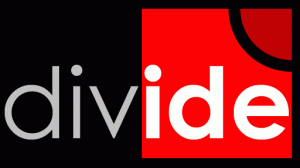
Autopsy:
from Divide homepage:
divIDE is an ATA (IDE) interface which takes your ZX Spectrum computing to a whole new level. As the time takes its toll on ageing media such as audio tapes or diskettes, many ZX Spectrum enthusiasts simply stick to emulation for better reliability and comfort.
With divIDE you can put your software collection to a hard disk, CD-ROM or even CompactFlash card and experience your favourite games, demos and utilities the way the were meant to be run – and even better. Using existing firmwares, many users find their Speccy box again a live platform – time for you to make the switch?
Features:
- divIDE uses full 16 bits of ATA bus.
- divIDE works on all ZX Spectrum flavours (16, 48, 48+, 128, +2, +2A, +3 and clones)
- Thanks to divIDE’s onboard logic, theoretical transfer speed is 218 KB/sec (determined by the latency of INI/OUTI instructions).
- divIDE has 8 KB of shadow flash ROM that hosts operating system core, leaving your original ZX Spectrum ROM intact. Additional 32 KB of RAM accessible as 8 KB memory banks are present.
- divIDE’s auto-mapping feature transparently maps shadow ROM at important entry points, enabling standard tape emulation, BASIC extensions, NMI menu and DISCiPLE/+D or BetaDisk emulation.
- divIDE’s MAPRAM feature helps developers and users to test new software without the need of reflashing their working system in shadow ROM. It can also emulate another 8 KB of ROM if necessary.
- divIDE works with all ATA-compatible devices (there are no known compatibility issues).
- Available software supports widely used emulator formats (TAP, SNA, Z80, SCR). Just download your all-time favourite games from the web and play!
source: divide homepage divide forum
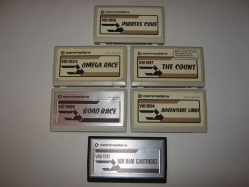
Cartridges list:
- VIC-1909 – Road Race.
- VIC-1911 – 16k RAM Cartridges.
- VIC-1914 – Adventure Land.
- VIC-1915 – Pirate’s Cove.
- VIC-1917 – The Count.
- VIC-1924 – Omega Race.
Autopsy:
from Wikipedia:
As for commercial software offerings, an estimated 300 titles were available on cartridge, and another 500+ titles were available on tape. By comparison, the Atari 2600—the most popular of the video game consoles at the time—had a library of about 900 titles near the end of its production life (many were variations of another title).
Most cartridge games were ready to play as soon as VIC-20 was turned on, as opposed to games on tape which required a time-consuming loading process. Titles on cartridge included Gorf, Cosmic Cruncher, Sargon II Chess, and many others.
source: wikipedia
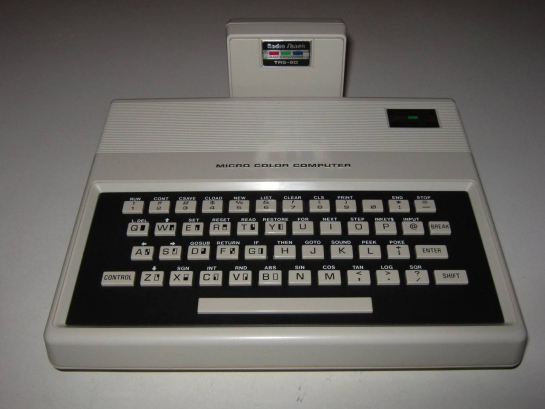
Autopsy:
from Wikipedia:
TRS-80 was Tandy Corporation’s desktop microcomputer model line, sold through Tandy’s Radio Shack stores in the late 1970s and early 1980s. The line won popularity with hobbyists, home users, and small-businesses. Tandy Corporation’s leading position in what Byte Magazine called the “1977 Trinity” (Apple, Commodore and Tandy) had much to do with retailing the computer through more than 3000 of its Radio Shack (Tandy in the UK) storefronts.
Notable features of the original TRS-80 included its full-stroke QWERTY keyboard, small size, well-written Floating Point BASIC programming language, an included monitor, and a starting price of $600.
The MC-10 was a short-lived and little-known Tandy computer, similar in appearance to the Sinclair ZX81.
It was a small system based on the Motorola 6803 processor and featured 4 KB of RAM. A 16 KB RAM expansion pack that connected on the back of the unit was offered as an option as was a thermal paper printer. A modified version of the MC-10 was sold in France as the Matra Alice. Programs loaded using a cassette which worked much better than those for the Sinclair.
A magazine was published which offered programs for both the CoCo and MC-10 but very few programs were available for purchase. Programs for the MC-10 were not compatible with the CoCo.
source: wikipedia trs-80.com themc10archive.com
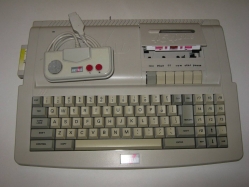
Autopsy:
from Wikipedia:
The Amstrad CPC is a series of 8 bit home computers produced by Amstrad during the 1980s and early 1990s. “CPC” stands for ‘Colour Personal Computer’, although it was possible to purchase a CPC with a green screen (GT64/65) as well as with the standard colour screen (CTM640/644).
In 1990 Amstrad introduced the “Plus” series, 464 and 6128 Plus, which tweaked the hardware and added a cartridge slot to the system. Improvements were made to the video display which saw an increase in palette to 4096 colours and gained a capacity for hardware sprites.
Splitting the display into separate modes and pixel scrolling both became fully supported hardware features. The former was reasonably easy on the non-”Plus” machines, and the latter possible to some degree using clever programming of the existing Motorola 6845.
source: wikipedia
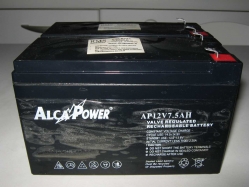
These are the Batteries of my APC Smart UPS 700 after two years of intense use (Firewall & Server).
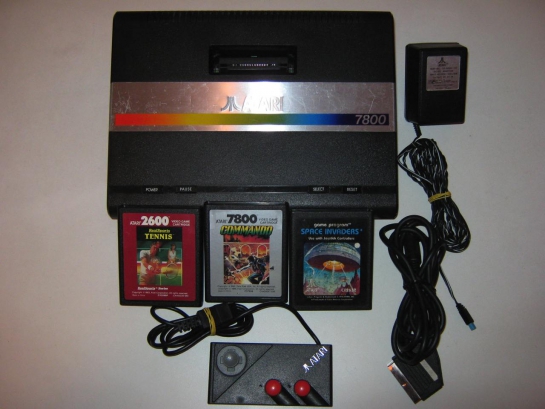
Autopsy:
from Wikipedia:
The Atari 7800 ProSystem, or simply the Atari 7800, is a video game console re-released by Atari Corporation in June 1986.
The original release had occurred two years earlier under Atari Inc. The 7800 was designed to replace Atari Inc.’s unsuccessful Atari 5200 and later to re-establish Atari Corp.’s market supremacy against Nintendo and Sega.
With this system, Atari Inc. addressed all the shortcomings of the Atari 5200: it had simple digital joysticks; it was almost fully backward-compatible with the Atari 2600; and it was affordable (originally priced at US$140).
source: wikipedia
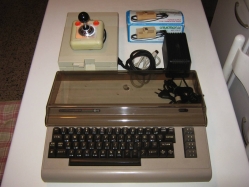
Gallery / Autopsy:
Stuff Donated:
- 1 x Joystick TAC II from Suncom.
- 1 x Commodore 64.
- 1 x Commodore Floppy Drive 1541 II.
- 1 x Compatibile Powersupply for Commodore 64/VIC20.
- 1 x Cabletronic Compatible Powersupply for Commodore Floppy Drive 1541 II.
- 1 x Commodore 64 Cover Protection.
- 2 x Serial Floppy cable.
Thanks to Igor.
from Wikipedia:
The Commodore 64 is an 8-bit home computer released by Commodore International in August, 1982, at a price of 595 USD.
Preceded by the Commodore VIC-20 and Commodore MAX Machine, the C64 features 64 kilobytes (65,536 bytes) of RAM with sound and graphics performance that were superior to IBM-compatible computers of that time.
It is commonly known as the C64 or C=64 and occasionally referred to as CBM 64 (Commodore Business Machines Model number 64), or VIC-64. It has also been affectionately nicknamed the “breadbox” and “bullnose” due to the shape and colour of the first version of its casing.
source: wikipedia




















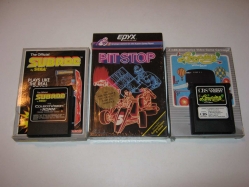



































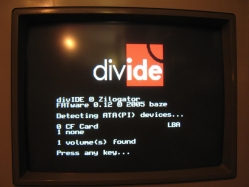




















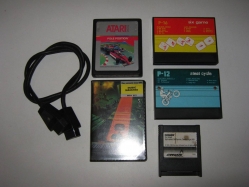





































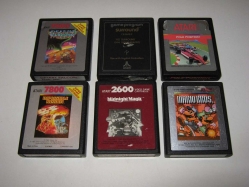































Recent Comments